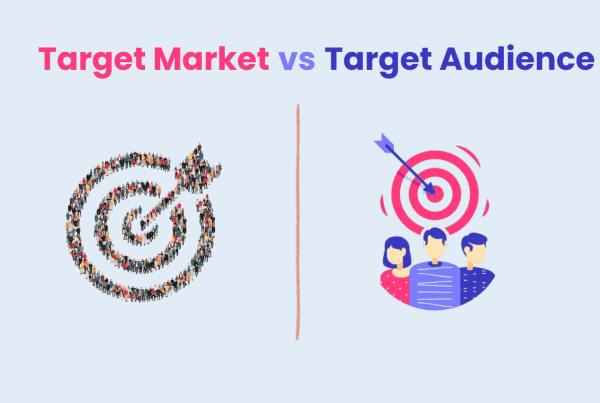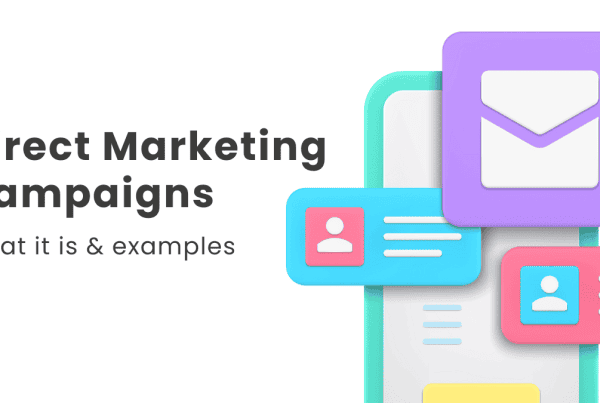
Making and selling unique items that cater to a wide range of consumer demands and needs is the foundation of any successful firm. Employing a differentiated marketing strategy allows businesses to accurately address their customers’ particular needs, resulting in increased value and satisfaction. In a competitive environment, standing out from the crowd is a hard challenge. The continual pursuit of client loyalty is critical, as competitors are constantly lurking, ready to grasp any opportunity to entice away your customers.
Businesses can become more connected with certain groups of customers by meeting their unique needs. Which will make those customers happier and help the business gain market share and make more money. A company can focus on the best customers with differentiated marketing, which allows companies to get a better return on their money.
What does differentiated marketing mean for all types of businesses? We will talk about them all, from small ones run by one person to huge ones.
What is Differentiated Marketing?
Differentiated marketing is a technique in which a company targets several market segments with unique solutions based on their needs, interests, and characteristics. Instead of using a one-size-fits-all approach, differentiated marketing recognizes consumer diversity and seeks to appeal to various groups through customized products, messaging, and promotional techniques.
This technique enables businesses to broaden their market coverage, efficiently service several consumer segments, and achieve a competitive advantage by providing more relevant and attractive solutions than their competitors.
Let’s understand it with an example:
Imagine there’s a cozy coffee spot in a busy part of town. It’s been open for six months, and most of its customers are young adults with regular incomes. The owner wants to bring in more customers during quieter times, so they decide to run a special deal for $1.99/cup next month.
They come up with two different ads to attract different kinds of people. For students or anyone on a tight budget, they make colorful flyers and put them up around nearby colleges. The flyers offer any coffee for just $1.99 during certain times. They want to show students that their coffee is just as good as the big chains but cheaper.
At the same time, they make a fancy video to appeal to people who care a lot about the quality of their coffee. In the video, they talk about where they get their special coffee beans and how carefully they make each drink. They put this video on their website and share it on social media sites where older, wealthier people hang out.
Even though the ads are different, they both offer the same $1.99 deal. This way, everyone gets a good deal, but the ads are tailored to what each group cares about. It helps the coffee shop get more customers and make more money.
Have you ever heard the saying “Change or Die”? You can change with the times and meet customer needs in another way by being different. Talk to people in more than one way. If you do this, some groups may still want your ads even if demand has dropped in other groups. This is the only way for many to make money when the market or seasons change.
There are various types of differentiation, including:
- Product: To show this, let’s use a vitamin company. There are two lines of vitamins made by this company. One is for men, and the other is for women.
- Cost: If a business makes two kinds of products, it will charge different prices for them. This way businesses can get people who like both expensive and cheap things.
- Promotion: Some brands use different kinds of ads to reach different kinds of people. This shows how to make something stand out so that people buy it. A beauty line might only sell one thing, but they might market it differently to meet the needs of women of all ages.
- Distribution: Ultimately, the distribution is different in how the product gets to the customer. Think of your favorite place to eat in town. You can eat there, pick it up, or have it brought to you, which shows that they use differentiation in distribution.
According to the Brand Master Academy, “The most loved brands in the world nurture intimate connections with their audiences. They speak directly to their target groups in a way that makes them feel they’re speaking directly to the specific customer’s needs”.
You can help your customers if you know what they are struggling with. Find a way to make your brand stand out and make unique marketing plans.
Difference between Differentiated Marketing and Undifferentiated Marketing
Undifferentiated marketing, also known as mass marketing or a mass-market strategy, is a strategy in which a business prepares a single marketing mix and targets it to the whole market rather than segmenting it based on demographics, psychographics, or other factors.
Undifferentiated marketing assumes that all consumers have comparable requirements and preferences, implying that the same marketing plan may effectively reach and appeal to the whole market. This method frequently entails leveraging mass media channels such as television, radio, or print advertising to reach a large audience with a consistent message.
Hence, Differentiated Marketing addresses numerous categories with personalized offerings and communications, based on diverse customer needs. Undifferentiated Marketing sees the entire market as a homogeneous group, using the same marketing mix for all consumers. Differentiation entails customization and targeting, whereas undifferentiated marketing takes a wide, standardized approach.
A Unique Marketing Strategy: What You Need
Before making a differentiated marketing plan, you need to know who you want to reach. This part might be tough, but you must do it to learn more about your clients. Before you send them a message, make sure you know who they are, what they want, and even what they hope for. For a campaign to work, it needs to make people feel something. To do this, write content for them that speaks to them by picturing yourself in their place.
It would help to make your message specific to the person you want to talk to. You should have a different sales page, digital ad, blog, and other useful content for each type of customer. People who need to know can find out what they need to know to make a good choice. Remember to always be real, important, and doable when you talk to someone.
Benefits of Differentiated Marketing
This type of marketing can help you stand out in a crowded market and do many other good things for your business in the long run. Here are some of the benefits of differentiated marketing:
Improved client satisfaction
Your marketing will work better and be more useful for your customers if you make it fit the wants and needs of each group. People who are happy with your business are more likely to stick around longer and tell their friends about it.
Improved market segmentation
You need to know a lot about your target market and its parts to use differentiated marketing. By targeting and grouping customers, you can learn much about their differences and what they like and want.
Getting a bigger market share is one way to beat your rivals. You can use this to find holes and chances that still need to be filled.
Growth in market share and revenue
You can get more sales from some groups if you market to them in a way that meets their needs. It’s more likely that people will buy from you when you use this targeted method. What you’re selling is more interesting to them. This will lead to more sales and a bigger share of the market.
Better use of resources
Given the inherent diversity of consumer groups, effective allocation of time and money in marketing efforts becomes critical. Identifying and prioritizing specific target groups enables more efficient resource allocation. Sales initiatives, improved customer service, and new product development are critical drivers of business growth and success. Businesses that spend wisely in these areas can successfully strengthen their market presence and create long-term growth.
Better brand positioning
Differentiated marketing can help your business build a strong brand, that many people will like. It could help the brand become known to more people, earn their trust, and keep their loyalty over time. A customer’s trust and loyalty towards a brand make more people want to join your brand and stay with it.
How To Create a Differentiated Marketing Strategy: Step-by-step Guide
For your differentiated marketing plan to work, remember these things:
Step 1: Check out the market
Learn as much as possible about the market to find different types of customers. To learn more about the target market’s different groups, look at your customer’s psychographics, behaviors, and preferences.
Step 2: Segmentation
Divide the target market into several groups based on the research. When you put customers into groups that make sense, you should consider their gender, age, where they live, how they live, what they like, and how often they buy things.
Step 3: Targeting
Choose the types of people who are most likely to see your ads. Before you decide, consider how it fits your business goals and how much money it could bring in.
Step 4: Positioning
When making your positioning strategy, you should consider what each segment needs and wants and how your benefits and unique value proposition can meet those needs.
Step 5: Changes to the marketing mix
As part of the marketing mix, ensure that the price, distribution channels, ads, and product features are all right for each group of people. This is your marketing mix. Please ensure everything in it fits what the people you want to reach want and expect.
Step 6: Implementation and Monitoring
Watch how well the targeted ads do after you start them. To fix things, you must alter them and regularly check on the plans.
When Is It A Good Idea to Use Differentiated Marketing?
Differentiated marketing works well for shopping malls and stores when a business wants to reach a variety of customer types. It means changing marketing plans to fit the needs, wants, and tastes of niche markets or different kinds of customers. For customers, this helps them remember and stick with the brand because it tells them more about them.
Differentiated marketing can help a company stand out in a crowded market. Businesses can make their goods or services look unique, making others want them. The business can be safe even if one group of customers does badly.
Companies can reach niche markets more effectively with differentiated marketing, which involves tailoring their products to meet the needs of these customers. If you offer good products or services that are solving a problem or making life easier, with lots of dedicated marketing strategies, It’s a good time to get into the market.
This marketing strategy lets businesses tailor their products and messages to the different groups of people they want to reach. People may be happier and stay with you longer if you do this.
A unique name in the market can also help a business stand out from others in the same field.
Businesses can adapt their plans to fit the needs of their customers and the market with this method of marketing.
Active Differentiated Marketing Examples
A coffee shop, a shoe brand, and an online consulting firm can all get their name out there in different ways:
Shoewear Brand
Based on age, gender, shoe tastes, and how people live their lives, a shoe brand can go after different groups of people.
Some examples of this type of targeted marketing for different groups are:
- Athletic shoes: If you like to work out and play sports, you should get basketball, running, cross-training shoes, and more. Performance, comfort, and durability could be the main points of marketing campaigns, with help from well-known athletes or leaders in the fitness community.
- Casual shoes: People who care about style, comfort, and looks will love these shoes. You should wear them every day. Businesses hire well-known fashion bloggers to promote their products by showing off the newest shoe styles and outfits that go with them.
- Eco-friendly shoes: As long as people care about the environment, making shoes from materials that are good for the environment is the right thing. Promo campaigns could talk about how committed the brand is to sustainability and how eco-friendly the shoes are. Customers who care about buying eco-friendly products could also write reviews.
Coffee Company
A coffee shop could put its customers into groups if it knew what they liked, how they liked their coffee brewed, and what they thought was right and wrong.
Here are some examples of marketing campaigns for different types of people:
- Specialty coffee: The best customers are those who like fine, single-origin beans with unique tastes. There could be ads that talk about where the coffee beans come from, how they’re roasted, and the best way to use them.
- Ready-to-drink coffee: Individual packs of various flavored coffee drinks are ready to drink for busy people who like things to be easy. Products could have ads about how simple they are to use, how many flavors they come in, and how well they fit into people’s busy schedules.
- Fair Trade and Organic Coffee: Let people pick between Fair Trade and Organic coffee beans. This shows that you care about them and the world. The business could say in its ads that it supports organic farming, helps small farmers, and buys from fair trade suppliers. All of these things are good for the environment.
Online Consultancy Firm
It would depend on the business, its size, and the consulting it needs to decide what kinds of people it could work with.
Here are some examples of marketing campaigns for different types of people:
- Small companies: Find small business owners who need help hiring people, running their businesses, and keeping track of their money. The company could say in its ads how well it helps small businesses grow, how it can meet their needs, and how pleased its small business clients are with its work.
- Tech startups: Cutting-edge tech companies that need to grow, make new products, or raise money. People could hear how well the company knows the business, has worked with cutting-edge technologies, and knows investors and other important tech people.
- Public interest groups: Giving groups help people make plans, write grants, and get money when needed. In their ads, the business could say that they want to improve the world, that they have run non-profits before, and that their help has helped other non-profits reach their goals.
Some Real-life examples of Successful Differentiated Marketing
Find out how differentiated marketing works by reading on.
- Coca-Cola: Everyone knows and loves the Coca-Cola brand. According to Edrawmind, the company changes how it positions itself as a brand to reach different types of people. It is a well-known fact that young people like it more, but by adding products with low sugar or low calories, Coca-Cola attracted a different group of people who care about their health more.
- Bumble: As covered by The Strategy Story, a lot of women start conversations on Bumble. It’s too good that Bumble added a new service for people who want to meet new people who like the same things they do. It was so easy for the app to connect people. So they’re right. A poll of Gen Zers found that 66% of them met their friends online. Bumble also made Bumble Bizz, a service that helps business owners find and work with freelancers.
- ThredUP: As per a report, ThredUP allows customers to buy second-hand apparel at discounted costs while also selling their stuff. The platform provides a comprehensive selection of adverts and items to meet the needs of a wide spectrum of consumers. Targeted marketing strategies include sending text messages to frugal buyers informing them of clothes and discounts. ThredUP also appeals to environmentally conscious customers, emphasizing sustainable living habits and its involvement in garbage reduction. Furthermore, for those interested in luxury labels, the LUXE section sells brand-new apparel, ensuring that fashion fans acquire high-quality things while lowering their environmental impact.
- HubSpot: HubSpot is an accomplished website and CRM platform that helps businesses streamline different elements of their operations. Companies can easily manage their shops by combining marketing, sales, customer service, and content development in one interface. As per a blog, HubSpot allows businesses to tailor their strategies and products to specific target groups by segmenting customers based on characteristics such as user preferences, business size, and budgetary limits, resulting in enhanced sales prospects. The site also provides several free products, which are appealing to freelancers and small enterprises looking to test its possibilities. As their needs change, consumers may choose to upgrade to higher-tiered plans, inspired by HubSpot’s intentional distribution of useful free materials. Regardless of size, every organization can use HubSpot’s CRM solutions to handle the hurdles of growth and improve operational efficiency.
- UpWork: Upwork is a platform where businesses can collaborate with freelancers to meet their specific needs. Upwork tailors its value packages to different client categories to meet the diverse needs of its user base. For freelancers, Upwork guarantees easy access to job opportunities, making it simple to find relevant assignments. Meanwhile, businesses benefit from Upwork’s streamlined procedure for recruiting skilled freelancers who can help them achieve their goals. Moreover, Upwork allows users to join various groups based on their choices and requirements. While small and medium-sized organizations may choose to manage recruitment internally, larger enterprises frequently use Upwork to efficiently hire a large number of outstanding workers. Thus, Upwork is a versatile alternative for enterprises of all sizes looking to use freelance talent to achieve their organizational goals.
Conclusion
In the highly competitive market landscape, presenting a business requires careful consideration. Differentiated marketing emerges as a powerful strategy, enabling companies to forge deep connections with diverse customer segments. By adeptly employing differentiated marketing techniques, businesses can offer unique experiences tailored to the preferences of their target audiences. This approach facilitates precise targeting, adaptability to changing market dynamics, and a competitive edge over rivals. The diverse benefits of differentiated marketing make it a mindful choice for businesses of all sizes and industries, positioning them for sustained success in the dynamic marketplace.



